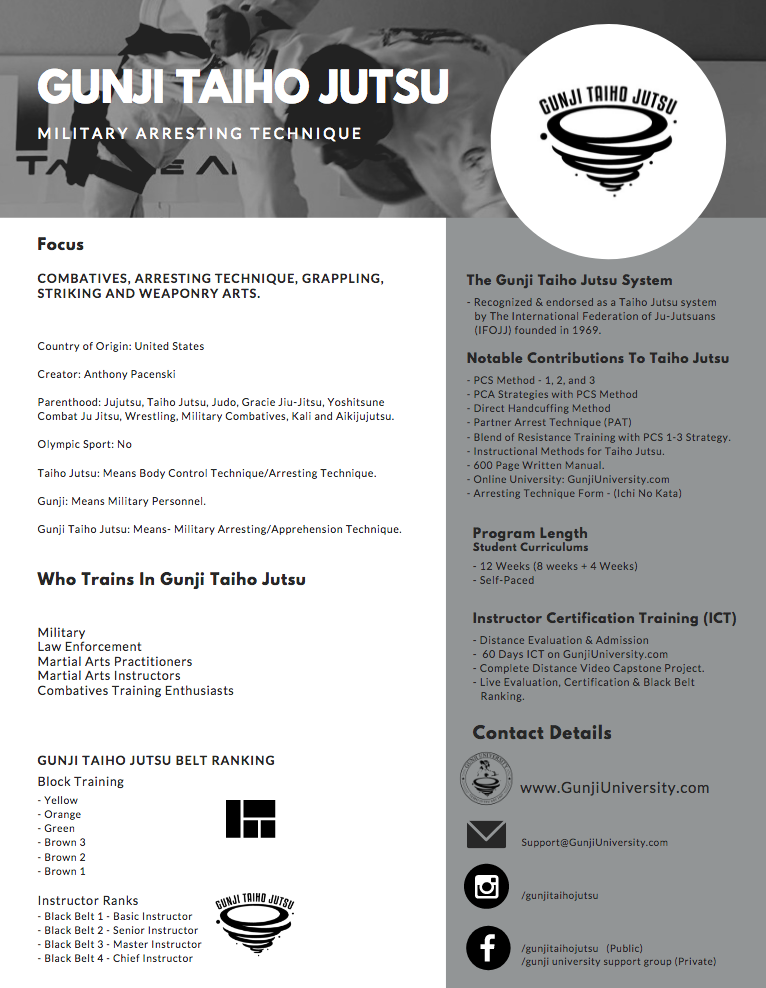Kote Gaeshi | Structure, Balance and Usefulness
 One of the popular techniques of Jujutsu and specifically Aikido is Kote Gaeshi. This is a wrist-turning technique that can bring an attacker to the ground or even throw him in the air. Kote Gaeshi is not a high percentage move applied in the dojo under high-level sparring. A wristlock control and throw is a small area to control, so many students when thinking of a takedown or throw control other bigger parts of the body instead of the wrist. It makes sense in a weaponless environment; however, if your training partner puts something in his hand to attack; how quickly you will find yourself rushing to control the wrist. I give you Kote Gaeshi.
One of the popular techniques of Jujutsu and specifically Aikido is Kote Gaeshi. This is a wrist-turning technique that can bring an attacker to the ground or even throw him in the air. Kote Gaeshi is not a high percentage move applied in the dojo under high-level sparring. A wristlock control and throw is a small area to control, so many students when thinking of a takedown or throw control other bigger parts of the body instead of the wrist. It makes sense in a weaponless environment; however, if your training partner puts something in his hand to attack; how quickly you will find yourself rushing to control the wrist. I give you Kote Gaeshi.
This past weekend Yasuo Kobayashi, Aikido 8th dan taught three techniques from a straight punch (Tsuki). Two of the technique transitioned into Kote Gaeshi and finally two different ways to turn the attacker to his stomach and finally two types of pinning techniques. What was nice about practicing this technique was the different experiences I had with all of the black belts in the Kobayashi Dojo. Sensei focused on pointing out the correct or preferred spacing I should have with my training partner (Uke). Questioned if it was ideal to bring the Uke's arm close to my body with some connection. Kobayashi Sensei showed me two different ways Uke can counter my idea of Kote Gaeshi.
The first technique for Kote Gaeshi versus the Tsuki was the classic concept of getting out of the way of the punch or attack coming straight at you. With the use of a hand deflection and legwork (Tai Sabaki) of spinning/turning called Tenkan, Sensei transitioned effortlessly into the Kote Gaeshi. My follow-up questions were concerning why he was entering with his footwork in technique number 1 and stepping back in technique number 2? Was it about the timing of being earlier or being late to counter the Tsuki? The translation from English to Japanese was finally present and the answer was somewhat of yes and no, but a feeling of improvising to the surprise of the attack related to distance. This led to a third technique of entering to take the attacker's elbow off the Tsuki that I like as it was very much Combatives and Gunji Taiho Jutsu. Nonetheless, the study of Kote Gaeshi should go on for a lifetime.
I always saw Kote Gaeshi as a body structure technique, not a wristlock throw. If you observe the arm structure of Uke during the Kote Gaeshi, you will see how this move takes away the posture of your training partner during or even before applying leverage to the wrist outward, inward, or downward towards the tatami. Somewhere during all of this is the practice of creating off-balance of Uke. This goal of finding the Kuzushi. After this last class on Kote Gaeshi, now I am focused on now only finding it much like in Judo, but also maintaining it and creating even more with better principles. One major principle was universal concepts of getting to Uke's blindspot and back position. Below is a great example of working toward this idea and training to understand/apply even more Kuzushi for Kote Gaeshi from Marius V's channel on youtube. Take a look.
Finally, A Big 85th Happy Birthday to Yasuo Kobayashi Sensei!!!

From his wiki...
Yasuo Kobayashi (小林 保雄, Kobayashi Yasuo, born September 20, 1936) is a Japanese aikido teacher holding the rank of 8th dan Aikikai.
Kobayashi was born in Kudan, Chiyoda-ku, in Tokyo. Though he started practicing judo as a child at the Kodokan, he eventually switched to aikido soon after starting university and he entered the Aikikai Hombu dojo as an uchideshi under Morihei Ueshiba in 1954. In 1969, he established his own dojo in Kodaira. He is also responsible for the aikido clubs at the Meiji University, Saitama University, and the Tokyo Economics University. He is regularly invited to teach abroad, in Taiwan, Finland, Sweden, United Kingdom, Canada (Calgary), the Nishida Dojo, and Shikanai Dojos in Brazil, Germany, and the United States.
As of January 2003, there are 120 groups that are directly controlled or more loosely affiliated to Kobayashi's organization Aikido Kobayashi Dojo. For its efforts to spread aikido among people, the Kobayashi Dojo received an organizational award for excellence from the Japan Budo Council in 1987. He maintains a residence at his dojo in Kodaira, Tokyo.
To The Reader
The author will be most happy to receive your comments, including criticisms and suggestions. Noteworthy comments may be included in future editions or books on this series.
Citations:
Aikido Kobayashi Dojo
Marius V's Aikido Channel.
Yasuo Kobayashi Sensei's Wiki.
– Prof. “little” Tony Pacenski
Yokota Air Base – Tokyo Japan
Gunji Taiho Jutsu (GTJ) | Military Arresting Technique is a system of taiho jutsu that is a progressive way to teach Military or Law Enforcement personnel many of the traditional and contemporary jujutsu techniques of control and arrest while at the same time keeping mindful of secondary weapon systems during training and complementing all of the current and evolving Military Combatives programs in place for the different branches of the Military.




